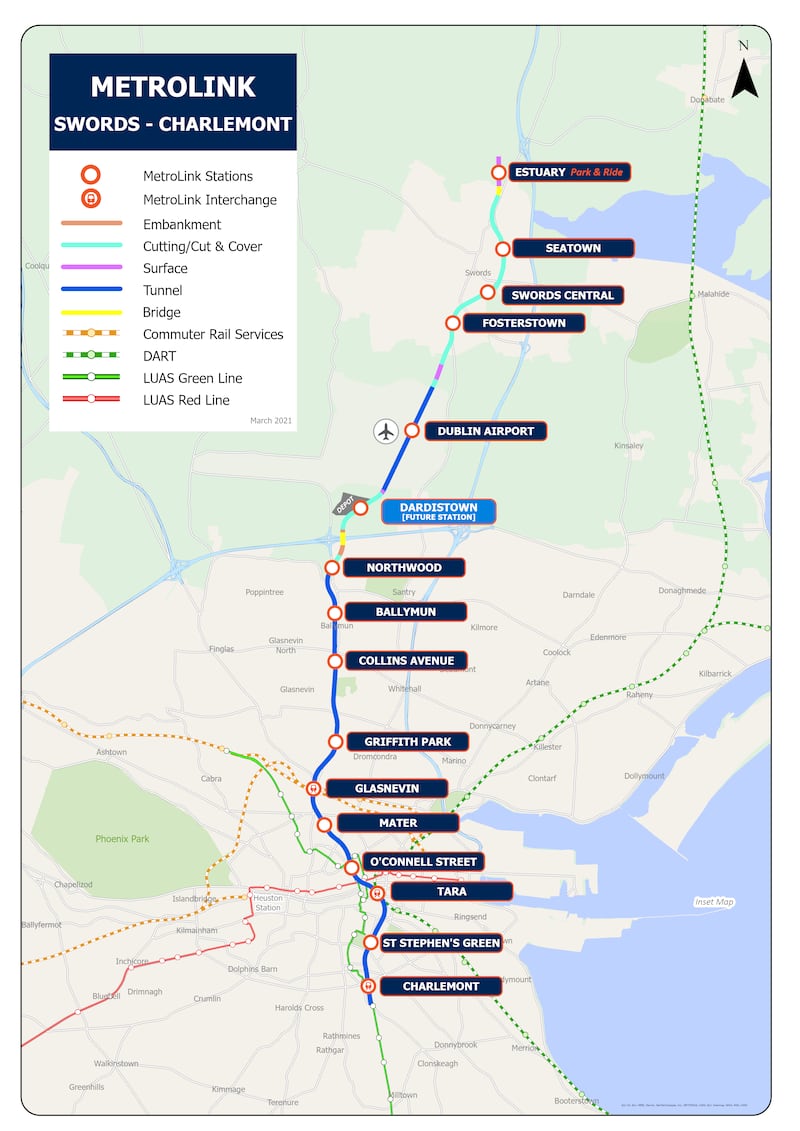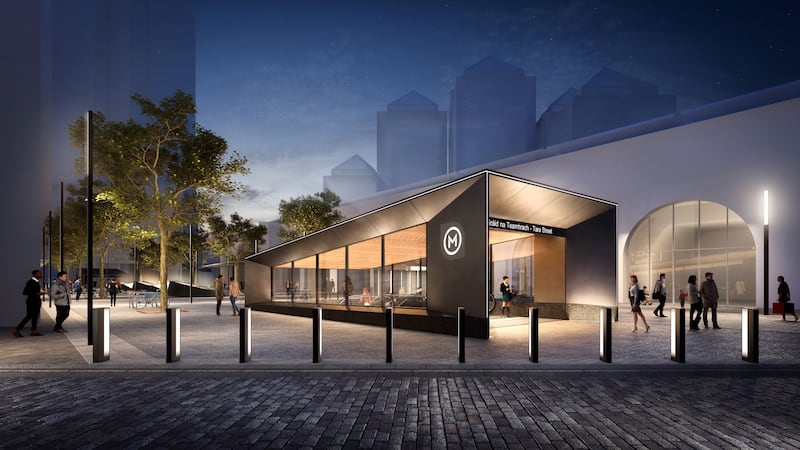Driverless trains would ferry passengers from north Co Dublin and the airport to the city centre from the early 2030s onwards under the latest Government pledge to deliver a €9.5 billion Metrolink rail system.
The commitment was made as Ministers and transport officials unveiled plans for a service first mooted more than two decades ago but delayed for many years due to the financial crisis more than a decade ago.
[ A history of the Metro project that never was Opens in new window ]
Green Party leader and Minister for Transport Eamon Ryan said “there’s still a lot of work to do before the first sod is turned but one thing I’m absolutely convinced of today - that first sod will be turned”.
“Dublin will have a metro,” he added.
What’s it like to be 25 in Ireland today? 70% live at home with their parents, CSO finds
An Irishman at Oxford: It was an education in being an outsider. I felt alienated from the very start
Forget the gym: Here’s four fitness lessons from around the world
Six Nations preview: Wales will do well to avoid another wooden spoon
Under the plans, automated trains would run every three minutes at peak times and the system would be capable of carrying up to 20,000 passengers per hour in each direction.
The 19.4km line starting at Swords would have 16 stations, mostly underground, and would serve areas including Ballymun, Glasnevin and O’Connell Street before terminating at Charlemont Street, where there will be a connection to the Luas Green line.
The Cabinet approved the National Transport Authority (NTA) and Transport Infrastructure Ireland’s (TII) preliminary business case for Metrolink on Monday.

Private sector funding will be sought as part of a Public Private Partnership (PPP) deal for the operation of Metrolink system for a period of perhaps 25 years. Under the plans, around three-quarters of the cost would be covered by the State with the rest being financed through the PPP arrangement.
An estimated cost of €9.5 billion has been identified as the midpoint of a “credible” price range for the project of between €7.16 billion and €12.25 billion, which takes risks and inflation into account. An extreme case scenario put the potential cost as high as €23 billion, but the Government does not believe that scenario will arise.
Read more on the Metrolink project
- Metro linking Dublin Airport to city centre estimated to cost €9.5bn
- Dublin MetroLink to be delayed until 2035 at the earliest
- Transport official put under pressure to set out MetroLink timeline
Mr Ryan said the cost estimates have been “excessively cautious and conservative” to make sure there is no repeat of the cost escalation that occurred with the National Children’s Hospital project. He said it is “not cheap to build things in Ireland” by international standards, but he was confident that the cost will be closer to the lower estimate of €7.16 billion.
Minister for Public Expenditure Michael McGrath said the appraisal and design process for major capital investment projects has been reformed and there are now a number of decision making stages at which projects can be paused and re-evaluated if necessary.
The analysis presented to ministers suggests that MetroLink could deliver benefits to the Irish economy and society to the tune of €13.7 billion over 60 years, which the Government said is “well in excess of expected project costs”.
The final decision on giving the project the go ahead will only be made once the exact cost is known following the planning and procurement processes. The Government hopes that construction can begin in 2025 and Metrolink could be completed between 2031 and 2034.
TII chief executive Peter Walsh said the PPP element of the procurement process could cover elements like the tracks, rolling stock, the signaling system and the operation of the service. He said that the terms have not been fully determined but the duration of the arrangement would be “in the order of 25 years”.
“The reason for going to that system is that it transfers risk to the people who are going to be operating it in terms of getting it up and functioning,” he said, adding that he believed such an arrangement “protects the taxpayer’s interests very strongly”.
NTA chief executive Anne Graham said her organisation would like to retain the regulation of passenger fares for the Metrolink.

Mr Ryan suggested that Metrolink could in future be extended further into the southside towards the south-west suburbs. The project is said to be “hardwired” to Ireland’s climate action ambitions, providing over one billion carbon neutral, fully electrified, passenger trips by 2050.














